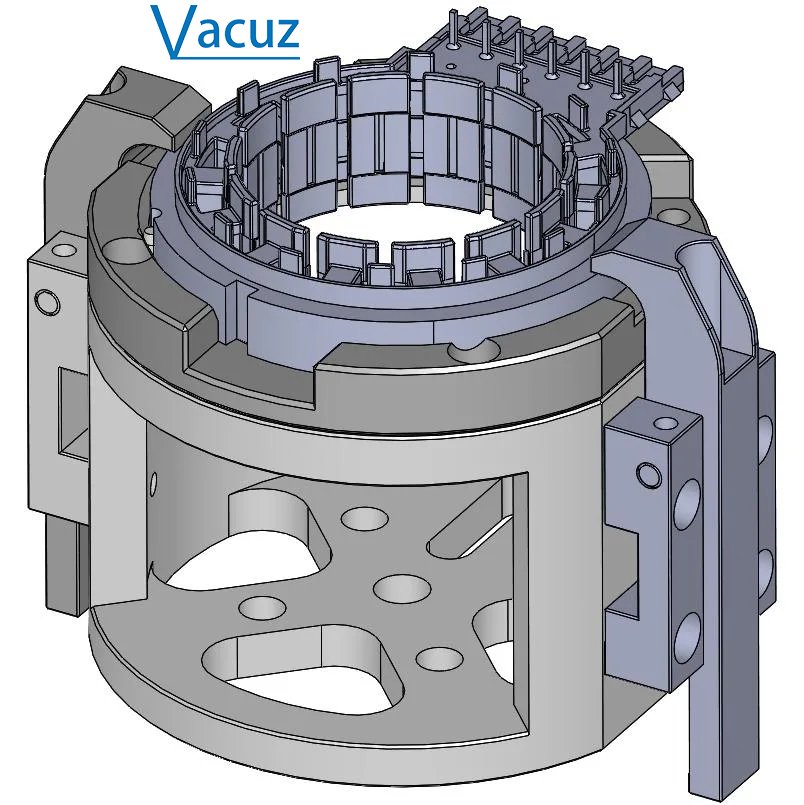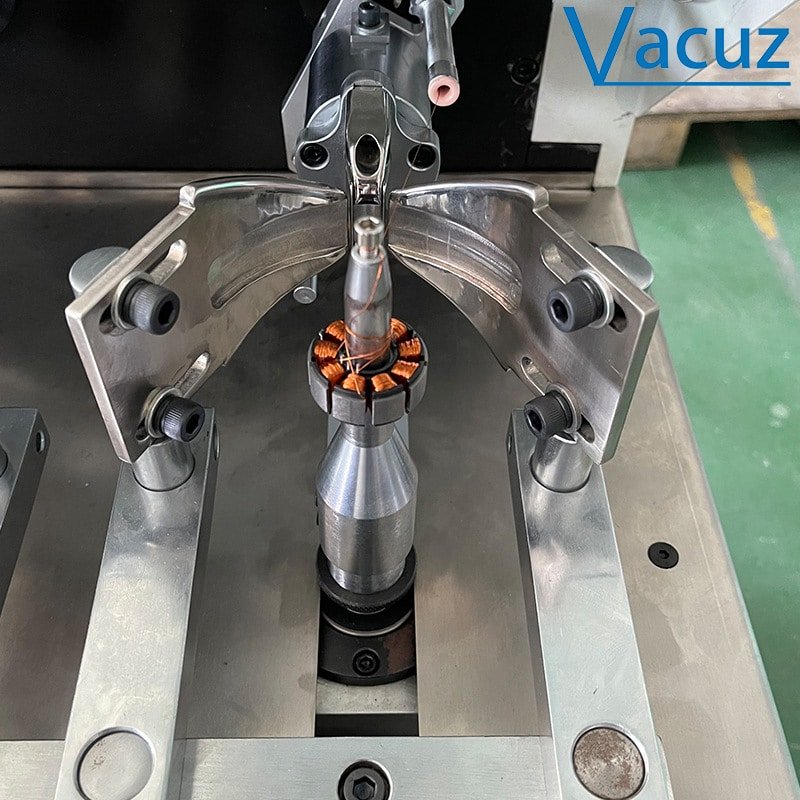When discussing the selection of winding machine equipment, we will inevitably pay attention to the speed difference between the flying fork outer winding machine and the needle inner winding machine and the reasons behind it. Vacuz’s in-depth analysis of these two winding machines and the key factors to consider when choosing a winding machine.

Vacuz R&D Two Stations Automatic Inner BLDC Brushless Motor Stator Coil Needle Winding Machine Equipment
1. Speed difference and its root cause
There is a significant difference in speed between the flying fork outer winding machine and the needle inner winding machine. Usually, the speed of the high-speed inner winding machine can reach 800 to 1200 revolutions per minute (R.P.M), while the high-speed outer winding machine can easily break through the threshold of 2500R.P.M. This speed difference is mainly due to the essential difference between the two in winding method and mechanical structure.
1. Needle inner winding machine: specially designed for stator products with inward notches, using a complex upper hook or lower hook inner winding method. The needle bar wire nozzle under servo drive control drives the enameled wire up and down, and the mold rotates left and right to ensure that the wire is neatly wound into the notch. Although this fine operation mode ensures the accuracy of winding, it also limits its speed improvement.
2. Flying fork external winding machine: For stator products with slots facing outward, a simpler and more direct flying fork winding method is adopted. The rapid rotation of the flying fork drives the enameled wire to move accordingly. Under the coordinated action of the stator rod, stator frame, die head and guard plate, the wire can be neatly wound into the stator slot. This simpler operation process gives the flying fork external winding machine a significant advantage in speed.
Key factors for selecting a winding machine:
When selecting a winding machine that suits your production needs, we need to consider the following key factors comprehensively:
1. Product requirements: clarify the type, specification and quantity of the stator products to be wound. Different products may be suitable for different types of winding machines. For example, stator products with slots facing inward are more suitable for needle-type internal winding machines, while stator products with slots facing outward are more suitable for flying fork external winding machines.
2. Winding requirements: Choose a suitable winding machine according to the winding requirements of the product, such as wire diameter, number of turns, arrangement, etc. For products that require multi-strand winding, a winding machine that can support this function should be selected.
3. Production efficiency: While pursuing production efficiency, we must also ensure the stability and accuracy of the winding machine. If production efficiency is the primary consideration, then a faster flying fork outer winding machine may be a good choice; if the accuracy requirement is higher, then a more precise needle-type inner winding machine may be more suitable.
4. Cost budget: Cost budget is also a factor that cannot be ignored when choosing a winding machine. Needle-type inner winding machines are usually higher in configuration and relatively expensive; while flying fork outer winding machines are relatively simpler and more affordable. Therefore, under limited budgets, we need to weigh the relationship between performance and price and make a more sensible choice.

Машина за навиване на летящи вилици с 4 вретена
In summary, there are significant differences between flying fork outer winding machines and needle-type inner winding machines in speed, winding method and mechanical structure. When choosing a winding machine, we need to comprehensively consider factors such as product requirements, winding requirements, production efficiency and cost budget to ensure that the selected equipment can meet our production needs and bring good economic benefits.
Имейл: sales@vacuz.com





